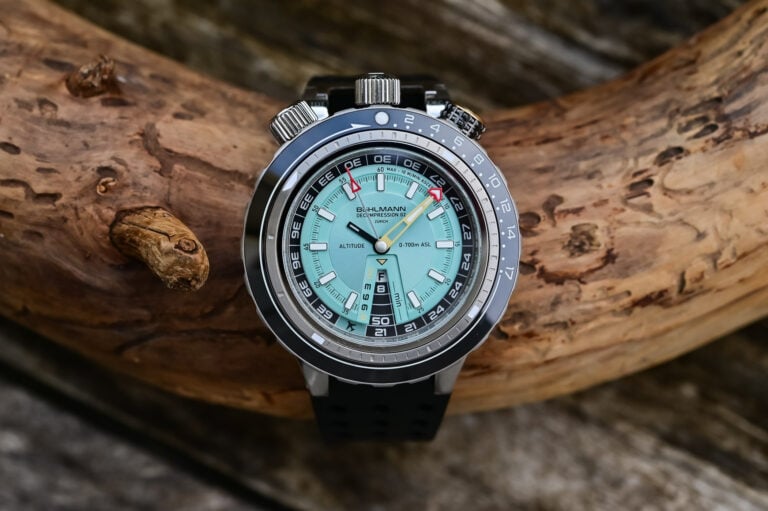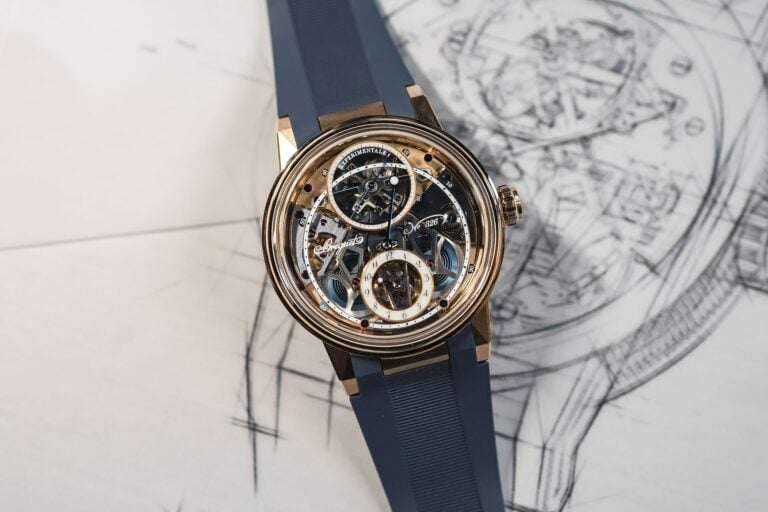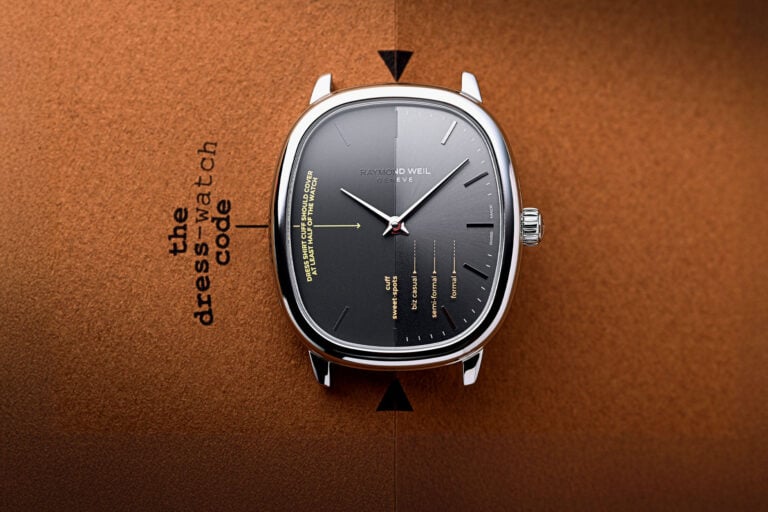Jiro Katayama Releases the Otsuka Lotec ? 9 with In-House Tourbillon, Striking and Jumping Complications
A major step up for the Japanese indie, with an in-house movement packed with complications and character.
As of now, and given the noise this brand has made in recent months, most seasoned watch enthusiasts are likely familiar with the work of watchmaker Jiro Katayama, the man behind Japan’s sensation, Otsuka Lotec. A brand that focuses on original displays and industrial designs, we have, over the past few years, covered the ? 6 with its double-retrograde display, the ? 7.5 with its camera-like apertures and the recent ? 5 Kai with satellite hours. And for now, all were based on an automatic Miyota movement with a self-developed display module on top. Today, Jiro Katayama raises the bar, not by one notch but by a handful of them. Indeed, the new Otsuka Lotec ? 9 now comes with an in-house developed movement and many, many more features to discover. And a price tag that’s far from what it used to be, too…
Let’s start with a short reminder about Otsuka Lotec… This brand is the brainchild of independent watchmaker Jiro Katayama, a Tokyo-based watchmaker and designer, who draws his inspiration not from the realm of watches but from the industrial world, where his career began – cars, trains, aeroplanes, all kinds of vehicles, gauges, music, hi-fi instruments, and cameras too. In recent years, his watches, all based on an industrial, highly mechanical expression of watchmaking, combining rough finishes and original displays, have gained incredible traction. The success is also due to his low production volume and the inability to buy them outside of their country of origin, Japan. The ? 5 Kai even made it to the GPHG 2025 pre-selection.

All of his creations so far have been built around the same mechanical idea: an outsourced automatic movement produced by Miyota, powering a self-developed and manufactured module on top to put Katayama’s displays in motion. This allowed Otsuka Lotec watches to be reasonably priced (on paper, and only if you could source them locally), somewhere between JPY 400,000 and JPY 800,000 (or between EUR 2,300 and 4,600). With its latest creation, the Otsuka Lotec ? 9, watchmaker Jiro Katayama has decided to go in-house. But mind you, we’re not talking about creating a new time-only automatic movement to power his display modules. No, dear readers, we’ll be looking at a new hand-wound movement that packs complications: tourbillon, hour strike mechanism, jumping hours and rewinding minutes. Quite a different animal altogether, which explains that this ? 9 is about 20 to 40 times more expensive than previous models.
The new Otsuka Lotec ? 9
First and foremost, this new model ? 9 demonstrates a strong design evolution. Although the case is rectangular, it remains true to the steampunk, industrial language that we’ve grown accustomed to seeing from Katayama-san. The case, made of stainless steel and a sapphire crystal that wraps around the movement, including on the sides, is basically built around the movement, measuring 48mm in length and 30mm in width. Fairly compact, indeed. Its thickness is claimed to be 13mm at the highest point, knowing that the solid steel back is curved to hug the wrist, also implying that the case will be thinner in the centre.
The shape of the case, the hairline finish, the position and design of the crown (top left corner), the position on the hour strike pusher (bottom left corner), the finishing of the caseback… Everything in this watch feels industrial, mechanical, like an old-school machine that you’d see in a metalwork atelier, full of screws and bolts, and packed with analogue gauges. In classic Otsuka Lotec style, it is a watch with its own character, one that doesn’t follow the traditional rules of classic luxury watches.
Display, movement and complications
Let’s move immediately to the mechanics, as there isn’t a dial to talk about in this new Otsuka Lotec, since all elements of the display are part of the movement itself, or working immediately on top of it. As you’ve come to expect from Jiro Katayama, the indication of the time in an Otsuka Lotec doesn’t rely on traditional hands. Instead, this ? 9 combines two unusual and complex mechanics for the hours and minutes. The hours are displayed thanks to a jumping disc at the highest point of the movement. The transparent disc makes an instant jump every hour, to bring the current time in a window backed by a luminous block, illuminating the numerals from below.
At the centre of the dial lies the rewinding minutes mechanism. Not a simple trailing minutes disc, it actually is a retrograde system that moves like an analogue body weight scale. A hairspring at the centre of the disk serves as the driving force, snapping the minute disc back to zero at the top of every hour. Once again, a luminous block on the right side provides luminescence for better readability in low light. Finally, the power reserve is indicated by a slim indicator just right of centre on the dial, with a small cylinder that goes in and out depending on the remaining energy.
Now that we’ve discussed the indications, there’s much more to this watch, including two important features. One is linked to the two jumping indications; the other is both a kinetic trick and an improvement for chronometry. Let’s start with the latter: the Otsuka Lotec ? 9 is regulated by a one-minute tourbillon beating at a rate of 2.5Hz (18,000 vibrations/hour) and equipped with a free sprung balance. Second, there is this absolutely fascinating gong on the left side of the case, perfectly visible from the side thanks to the wrap-around shape of the sapphire crystal.
This highly original, pipeline-shaped gong is linked to an hour striking mechanism, which will strike the hour together with the jump of the hour disc and the retrograde motion of the minutes disc. A large-sized hammer positioned on the lower left corner of the movement will strike this gong, resulting in “a crisp, industrial chime”, to quote the brand. The look, finish, and colour of this gong alone are mesmerising and add a unique, almost electrical touch to this otherwise highly mechanical watch.
Now, about the movement itself, it is named Calibre SSGT, a reference to the inspiration behind it and the fact that multiple complications are layered on the main plate, much like placing sushi on a sushi geta (wooden plate)… Su-Shi-Ge-Ta was then shortened to SSGT. Measuring 41.3mm by 26.4mm with a thickness of 10.35mm and comprising 278 components, this movement was conceived by Jiro Katayama using some elements of the Unitas 6498 (the barrel, for instance). That said, not much has survived from the venerable ETA hand-wound movement. It relies on 30 jewels and, something quite unique, 5 ball bearings – one for the central shaft of the hour disk, one for the pivot of the hour-striking hammer (both custom ruby ball bearings made by MinebeaMitsumi), two for the tourbillon and one for the minute disc measuring only 1.5mm in diameter, making it the world’s smallest ball bearing.
Availability & price
As with other watches by the brand, the Otsuka Lotec ? 9 isn’t going to be an easy one to acquire first due to its complexity, which implies low production volumes. Second, the brand is only available locally for Japanese customers, requiring a local credit card for purchase and no shipping outside Japan (that said, we know some OL watches have found their way around the world…) But, in a certain way, this JDM-only availability only adds to its desirability.
About the price, as you can expect, this Otsuka Lotec ? 9 plays in a different league than previous models. In fact, it is in a whole new galaxy, as this watch is priced at JPY 16,000,000 (excl. tax), or approximately EUR 92,000 (excl. tax). That being said, it doesn’t feel overpriced either, considering everything you get in terms of complications, functions and exclusivity. Well done, Katayama-san! More details at otsuka-lotec.com.

















3 responses
The order list of this low tech watch, going to be very … LONG …..
Absolutely fantastic work ! Incredible workmanship! I”m a poor watchmaker that lives in the bronx new york and have worked on many a watch and this my friend is an absolute winner! I only wish i had the money’s to aquire one .much luck to you with such a great success. Ko ne che wa!
Brilliant